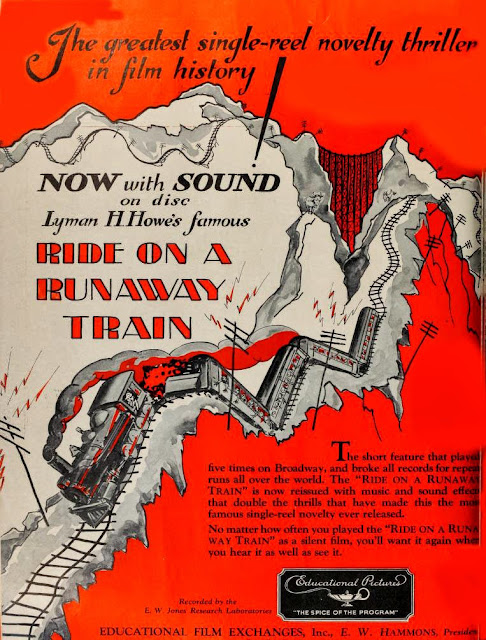Flynn As "The Robin Hood Of The Seas"
Favorites List --- The Sea Hawk
There also was a wonderful soundtrack album issued in 1972 to renew interest in The Sea Hawk. Charles Gerhardt conducted selections from the sefaring epic and others of Erich Korngold composition in what RCA sold as first in a series of classic music revivals. Colleges could rent The Sea Hawk for $75, but prints from UA/16 were a same as television, to-wit gray as ghosts. A hazard too were cuts that had been made by WB for a 1947 reissue, these diminishing The Sea Hawk from 127 first-run minutes to 109 for a pairing with The Sea Wolf (also trimmed). The footage had been put back to most prints in later TV/rental circulation, but collectors still felt the bite of stragglers reduced down from Dominant Pictures' 35mm that serviced 1956 dates. Dominant was a late theatrical stop for The Sea Hawk before its surrender to television with other Warner oldies. You could recognize cut prints for Dominant's logo that appeared at the head of credits. For 16mm gatherers, this meant Buyer Beware.
Now all that is as much quicksilver, for The Sea Hawk flies upon High-Definition wings on streaming services and hopefully soon from Warner Blu-Ray. It is a show that benefits for sharpest delivery of black-and-white, being one of the most richly designed and photographed of Gold Agers shot monochrome, a word I almost hesitate to use considering that The Sea Hawk looks more vivid than many peers boasting Technicolor. It might have been done in the latter process but for stock footage from earlier Captain Blood and even 20's sword/sash stuff Warners intended to use, but barely did, as spending for The Sea Hawk rose to a near studio record of $1.701,211 (only The Adventures Of Robin Hood had cost more). Of pirate pics Errol Flynn top-lined, actually fewer than you'd think considering his iconic status as such, The Sea Hawk was a summit. It's among his best and now even better thanks to HD delivery.
 |
| A Concluding Scene for The Sea Hawk That UK Patrons Saw More Of. |
What Warners has today is unique too as a definitive and for years unseen version of The Sea Hawk, being complete beyond even what American audiences saw in 1940. British prints featured an extended version of Flora Robson's Queen Elizabeth speech at The Sea Hawk's conclusion, it being a call to arms and plea for preparedness that would resonate with a
 |
| A "Color-Glos" Still As Issued by Warners for The Sea Hawk in 1940 |
Something else I noticed this viewing was the violence. Was that basis for Steven Scheur's counsel for parents to "stop your youngsters from watching"? Battling aboard ship is brutal, as are whips applied to captive backs below deck. The old
Flynn's performing too, had matured. I don't know of another 30's lead man whose acting progressed so rapidly (compare him in Captain Blood with immediate-after Charge Of The Light Brigade). Errol gets a little cute and ad-libby at times in The Sea Hawk, business with the monkey as example, but in moments where he exhibits leadership under stress, there's just no peer to Flynn. Watch next time business in the swamp where he notes desperate condition of his men, then draws himself up in knowledge they'll look his way for salvation. It's a great moment that wordless-conveys quality this star had that others wouldn't duplicate.
 |
| Luxury in Abundance at The Ambassador Theatre in St. Louis |
Here's an interesting engagement for The Sea Hawk that illustrates ongoing love-hate between exhibition and a by-1940 entrenched double-feature policy. The Ambassador in























































